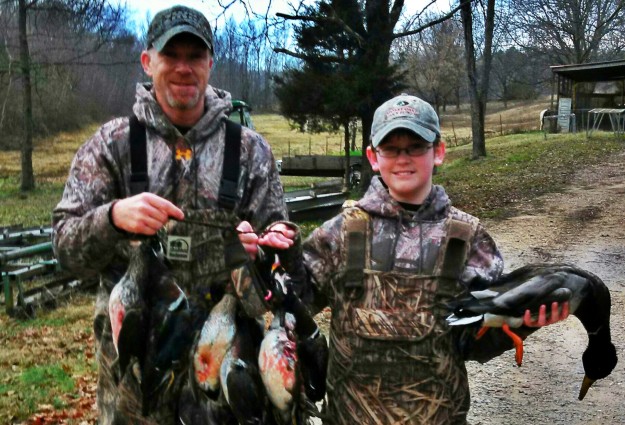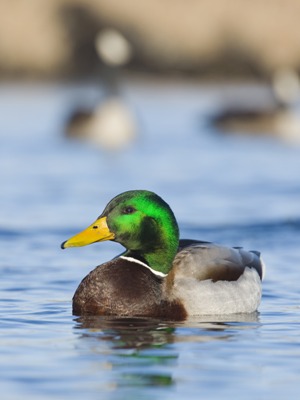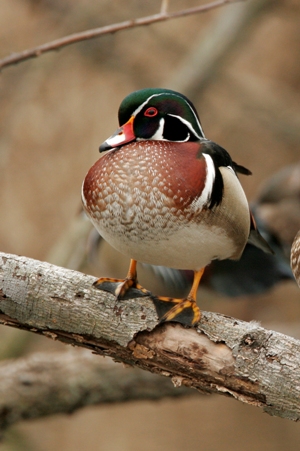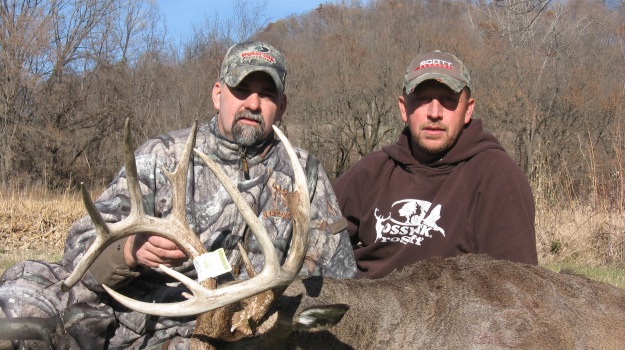How to find them and learning new methods of reaching untouched waterfowl sweet spots
By Jason Patterson

Wading through knee-deep mud in the early morning darkness, I noticed the tantalizing calls of mallard hens in the distance. I still had several hundred yards to go before I reached my destination in the swamp I call my home during waterfowl season. This is waterfowl hunting, blue-collar style, down and dirty, whatever you like to call it.
My trip to the bottoms is one I make quite regularly. I lease 250 acres of duck hunting heaven in west Tennessee. It is not your normal duck hole either - no spacious blinds or heated pits to relax in and wait for ducks to fall in your face. Don’t get me wrong; I spend a lot of time in those also. This is my mallard retreat, away from the boats running up and down rivers and constant calling of nearby blinds. There is not a lot of competition here, just you and the ducks.
Backwater Beginnings
Several years ago one of my co-workers suggested that I look into getting into a lease for whitetail and turkey in west Tennessee. I took him up on the offer, because we were very interested in the growing popularity of deer management. This was the perfect place to try our hand at it. Little road access and no pressure from nearby landowners offered us a prime property for wildlife management.
During a scouting trip for bow season, I stumbled on some new ground but this was different. There was standing water and lots of it. I treaded onward and soon jumped about two dozen woodies resting on the water. I was shocked. During the whole summer of feeding deer and turkeys, I had never ventured to this part of the property due to the fact it was not an easy walk. I planned to return and set up a rifle stand during early November so I could see what this area had to offer.
The area consisted of about two to three acres of standing water, cypress trees and lots of duckweed. Sitting on the edge of that swamp one November morning during muzzleloader season, I could not believe what I was hearing, ducks and lots of them. When daylight finally arrived, I completely forgot about harvesting a deer because there were ducks everywhere - mallards, gads, woodies and even a couple flocks of Canada geese made their presence known. I looked to the heavens and just thanked God over and over again. I was speechless.
I know it sounds like this is too good to be true but it was just there and no one knew but me. Luckily for me the other members in our lease don’t give a hoot about killing ducks. I had hit the jackpot!
The Hatchie river is one of the most underrated waterfowl hotspots in Tennessee, miles and miles of swamps, river bends and eddies provide waterfowl action in a primitive setting. Little did I know that I was less than a stone’s throw from the river itself.
Initial Adventure
 Let’s get one thing straight right from the start. This is not your typical duck hunting trip. This is more of an expedition, going away from the norm and trying something a little bit different.
Let’s get one thing straight right from the start. This is not your typical duck hunting trip. This is more of an expedition, going away from the norm and trying something a little bit different.
First, there are not a lot of maps to go by, just your basic river map that shows you the crude direction of the river itself. Some of the rivers in west Tennessee or wherever you roam in this great country, have maps that you can look over to get you started . My personal advice is to just put in and explore before you plan on hunting. Flat bottoms and smaller watercraft are the way to go here. Find you some potential hotspots to try your luck at and plan accordingly. Slack water in river bends is a good location to try first. If that doesn’t pan out, small pockets off the river are key areas to hone in on. Ducks fly up and down rivers with reckless abandon, so be on your guard when hunting these slack areas.
Also, if you know any landowners close to the river, give them a shout because several fields will flood with little rain. I also have a field on my property that we have levied up and it holds around 18 inches of water with normal fall rainfall. These are key areas when the river is at its normal stage. When the river floods, I take to the swampland and hunt the standing timber. You have to take some time and learn the river and its surrounding properties if you want to have success. This is mallard country, pure and at its finest!
What You’ll Need
Basically, less is best in this hunting scenario. A flat bottom boat with a mud motor or small outboard is all you need. Sometimes, if you have access to property surrounding the river, a four-wheeler will do the trick. Also, bring along a trolling motor in case your outboard lets you down. Current can cause you a whole lot of heartache if you are not prepared.
A boat blind is common here, but sometimes natural cover will be enough to get you a few ducks. One or two dozen decoys are plenty enough for this situation. Greenheads are the best choice with a woodie or two thrown in for good measure. If you have a spinning wing decoy to throw in your spread, use it; it really works on these ducks. I use two or three pontoon spinning wing decoys in my spread along with a dozen decoys.
A good double reed call is what I like on these birds; a natural call is really deadly on these backwater ducks. I don’t call a lot and really let these birds work;. They will drop right in on you with little warning. Be ready! The action can be fast and furious. Make sure you are prepared; all the bare essentials are needed on these hunting trips.
When To Go
 If you are tired of the normal blinds and lake hunting that the majority of us do, reach down in your gut and see if you have what it takes to explore the wild a little bit. I have rarely seen rivers freeze up, so ducks will use the river and the surrounding properties available.
If you are tired of the normal blinds and lake hunting that the majority of us do, reach down in your gut and see if you have what it takes to explore the wild a little bit. I have rarely seen rivers freeze up, so ducks will use the river and the surrounding properties available.
There are several duck clubs that are looking for members every year up and down various rivers. I have found that early season hunting is prime on the backwaters but consistent hunting is found throughout the season. If you are on a budget like I am, then putting in at one of the local access areas is the way to ducks, blue-collar style. It doesn’t cost a lot of money and really no expensive gear is needed. Just grab you a dozen decoys and a call or two.
Be on the lookout for weather fronts and cold weather. The ducks use this river system to go back and forth between major rivers. Fronts will give a push to new birds and they really take a liking to this particular river. It gives them a getaway from the pressured areas of the big rivers. Out of the way places are welcomed sites for hunters today, with the waterfowl seasons lacking numbers the past few years, any advantage is a plus.
Change Of Pace
Waterfowl hunting has been tough to say the least for the past several years. We have to try new and old style techniques to stay ahead of the game. The expansive river systems of North America are just a few of the areas you can look into for a change of pace. Get away from the crowds and you can find a few ducks. You never know, you just might walk into a mallard retreat like I did. Be thankful and respect what the Creator has made for you!




























